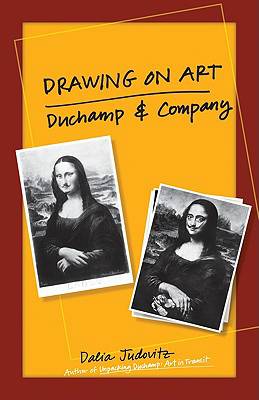
- Retrait gratuit dans votre magasin Club
- 7.000.000 titres dans notre catalogue
- Payer en toute sécurité
- Toujours un magasin près de chez vous
- Retrait gratuit dans votre magasin Club
- 7.000.000 titres dans notre catalogue
- Payer en toute sécurité
- Toujours un magasin près de chez vous
Description
Marcel Duchamp's 1919 readymade, L.H.O.O.Q., which he created by drawing a moustache and goatee on a commercial reproduction of the Mona Lisa, precipitated a radical reevaluation of the meaning of art, the process of art making, and the role of the artist. In Drawing on Art, Dalia Judovitz explores the central importance of appropriation, collaboration, influence, and play in Duchamp's work--and in Dada and Surrealist art more broadly--to show how the concept of art itself became the critical fuel and springboard for questioning art's fundamental premises. Judovitz argues that rather than simply negating art, Duchamp's readymades and later works, including films and conceptual pieces, demonstrate the impossibility of defining art in the first place. Through his readymades, for instance, Duchamp explicitly critiqued the commodification of art and inaugurated a profound shift from valuing art for its visual appearance to understanding the significance of its mode of public presentation. And if Duchamp literally drew on art, he also did so figuratively, thus raising questions of creativity and artistic influence. Equally destabilizing, Judovitz writes, was Duchamp's idea that viewers actively participate in the creation of the art they are viewing. In addition to close readings ranging across Duchamp's oeuvre, even his neglected works on chess, Judovitz provides interpretations of works by other figures who affected Duchamp's thinking and collaborated with him, notably Francis Picabia, Man Ray, and Salvador Dalí, as well as artists who later appropriated and redeployed these gestures, such as Enrico Baj, Gordon Matta-Clark, and Richard Wilson. As Judovitz makes clear, these associations become paradigmatic of a new, collective way of thinking about artistic production that decisively overturns the myth of artistic genius.
Spécifications
Parties prenantes
- Auteur(s) :
- Editeur:
Contenu
- Nombre de pages :
- 288
- Langue:
- Anglais
Caractéristiques
- EAN:
- 9780816665303
- Date de parution :
- 01-03-10
- Format:
- Livre broché
- Format numérique:
- Trade paperback (VS)
- Dimensions :
- 142 mm x 216 mm
- Poids :
- 435 g







